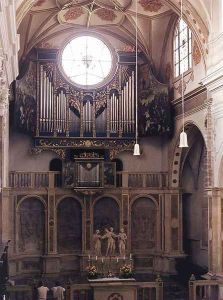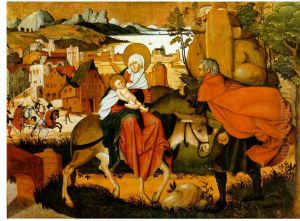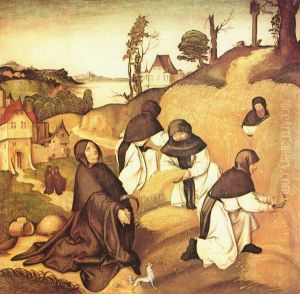Jorg Breu the Elder Paintings
Jörg Breu the Elder was a pivotal figure in the German Renaissance, known for his detailed and imaginative paintings, woodcuts, and decorative works. Born around 1475 in Augsburg, a city in the Holy Roman Empire that was a significant center for art and culture during the Renaissance, Breu's early life is shrouded in mystery, and little is known about his initial training. However, it is believed that he was influenced by the works of contemporary artists in Augsburg and possibly traveled to Italy, which was common for artists of his time seeking to refine their craft.
Breu's artistic output was diverse, encompassing religious themes, secular works, and intricate designs for festivals and tournaments, reflecting the broad scope of Renaissance art. His paintings are characterized by vibrant colors, attention to detail, and dynamic compositions, which show the influence of both Northern Renaissance and Italian Renaissance styles. Breu was also known for his woodcuts, a popular form of art in the 16th century, which were used to illustrate books and standalone prints. These works often featured elaborate scenes filled with figures and were marked by a keen eye for narrative and emotion.
Throughout his career, Breu played a significant role in the Augsburg art scene, contributing to the city's reputation as a cultural hub. He became a master in the Augsburg painters' guild and was involved in the artistic life of the city, including the planning and execution of public festivities. His works were commissioned by both the church and secular patrons, including members of the Fugger family, one of the wealthiest and most influential merchant dynasties in Europe at the time.
Breu's legacy is seen in the way he bridged the gap between the late Gothic tradition and the emerging Renaissance style, incorporating elements of both into his works. He trained several apprentices, including his son, Jörg Breu the Younger, who continued his father's artistic tradition. Jörg Breu the Elder died in 1537 in Augsburg, leaving behind a body of work that continues to be admired for its creativity and craftsmanship. His contributions to the German Renaissance have made him a significant figure in the history of European art, celebrated for his ability to capture both the spiritual and secular worlds of his time.


